
It is designed to keep them warm in their natural habitat high up in the Andes mountains.
When you move them into your warm home, that fur can suddenly pose a problem on hot days.
You need to ensure your chinchilla stays cool to avoid heat stroke, which can be fatal.
And before you even think it, shaving your chinchilla is not an option.
Ideally, you should use A/C to keep your chin’s room nice and comfy.
But what if air conditioning is not an option?
Keep reading for 10 easy, effective, and mostly cheap methods for keeping chinchillas cool without A/C.
Contents
- 1 Keeping Chinchillas Cool Without A/C: 10 Tips
- 1.1 Wipe It With A Damp Washcloth
- 1.2 Place Its Cage In A Well-Ventilated Area
- 1.3 Keep Your Pet Hydrated With Cool Water
- 1.4 Blow Cool Air Into The Cage With A Fan And Ice Cubes
- 1.5 Use A Cooling Pad Or Chilling Granite Stone
- 1.6 Provide Regular Dust Baths
- 1.7 Maintain Optimum Humidity
- 1.8 Use Blinds Or Blackout Curtains
- 1.9 Add Hideouts And Shaded Areas Inside The Cage
- 1.10 Avoid Using Electrical Devices In The Room
- 2 Cooling Chinchillas Without Air Conditioning: Related Questions
- 3 Cooling Chinchillas Without A/C: Final Thoughts
Keeping Chinchillas Cool Without A/C: 10 Tips
Chinchillas are sensitive to extreme heat, so you need to make provisions to keep their room temperatures below 75° F (24° C). If your air conditioning has gone kaput or you do not have one in the first place, the following 10 tips can help you keep your chin cool.
Wipe It With A Damp Washcloth
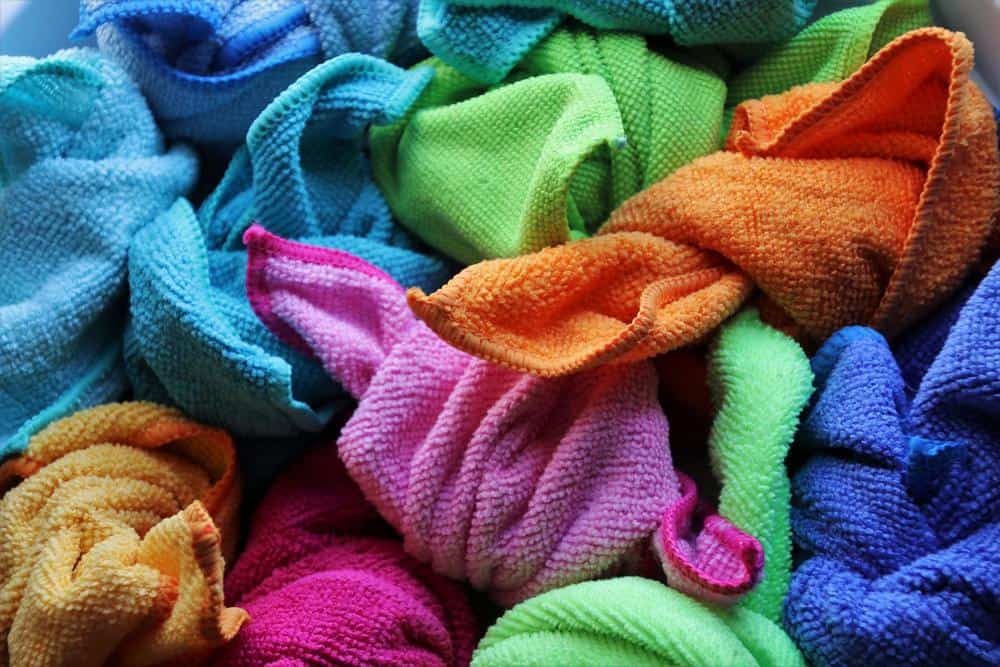
What You Need
- Washcloth
- Water
Soak the washcloth with a bit of water and wring it thoroughly. Please avoid using too much water.
The washcloth should not be dripping with water, because you do not want your pet’s fur to get soaking wet. It should only be slightly damp. A chinchilla’s coat should never be completely wet as that can invite fungal issues.
Simply wipe your chinchilla by gently rubbing the washcloth all over its body. This will cause it to lose body heat rapidly, as the water evaporates, and cool it down considerably. You can repeat this process 3 to 4 times a day.
Place Its Cage In A Well-Ventilated Area
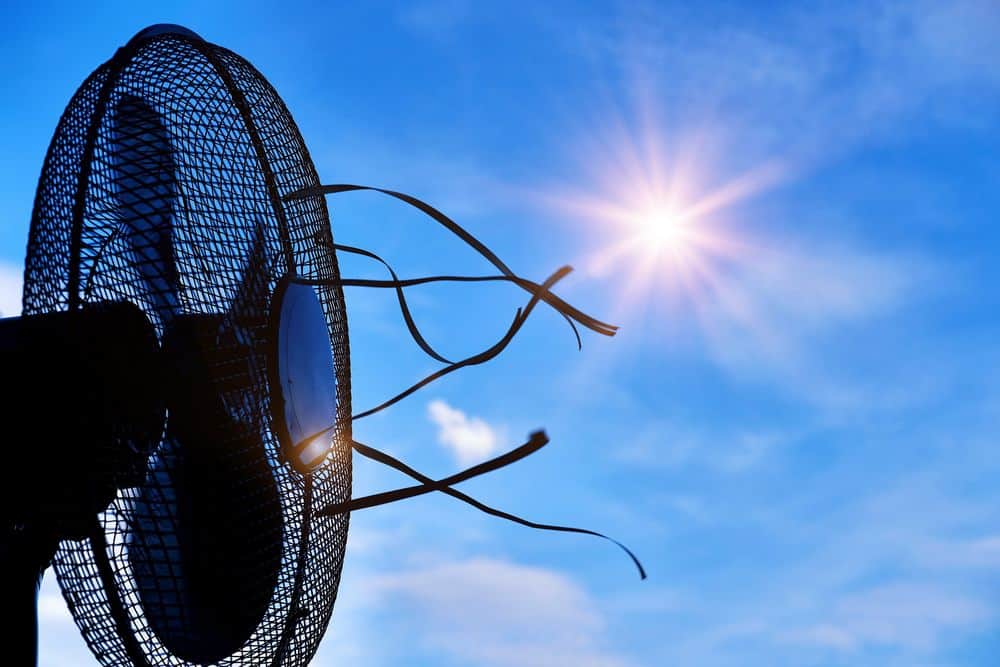
What You Need
- A ceiling fan or battery-operated desk fan (if you do not have power)
Without an A/C, the best way to keep your chinchilla cool is to ensure adequate air circulation in the room. Place your pet’s cage in a well-ventilated area having plenty of windows. If possible, run a ceiling fan.
If you do not have a ceiling fan, use a regular floor or desk fan. If there is a power outage, consider using a battery-operated desk fan (it is always a good idea to have one of these as a backup anyway).
Keep Your Pet Hydrated With Cool Water

What You Need
- Vacuum-type water bottle attached inside the chinchilla’s cage or a small water dish
- Some ice cubes to add to the water
Chinchillas are used to dry and arid desert conditions. As such, they do not drink too much water. Nevertheless, you must keep your pet hydrated by placing an adequate supply of fresh and cool water in its cage.
Adding a few ice cubes to the water is also a good way to get your chinchilla to drink more water than usual. Never give ice cubes to chinchillas to eat directly, since they could crack their teeth on them.
Blow Cool Air Into The Cage With A Fan And Ice Cubes
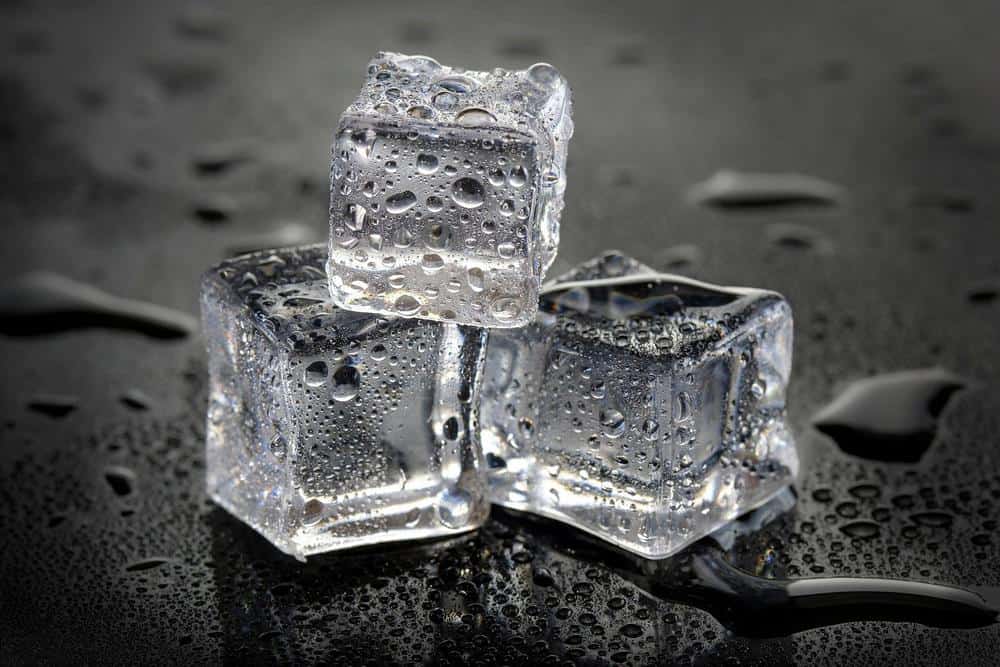
What You Need
- A small floor or table fan
- Some ice cubes on a dish
For summer days with oppressive heat and temperatures above 80° F (27° C), simply using a fan won’t keep your chinchilla cool. The fan will only blow warm air into the cage. Moreover, chinchillas do not sweat, so the moving air will not do much in the way of cooling them.
Instead, use the fan to blow chilled air into your pet’s cage.
You can do so by placing ice blocks on a dish, in the path of the fan’s air. Make sure cool air gets directed inside the cage near the spot where your chinchilla rests.
Use A Cooling Pad Or Chilling Granite Stone
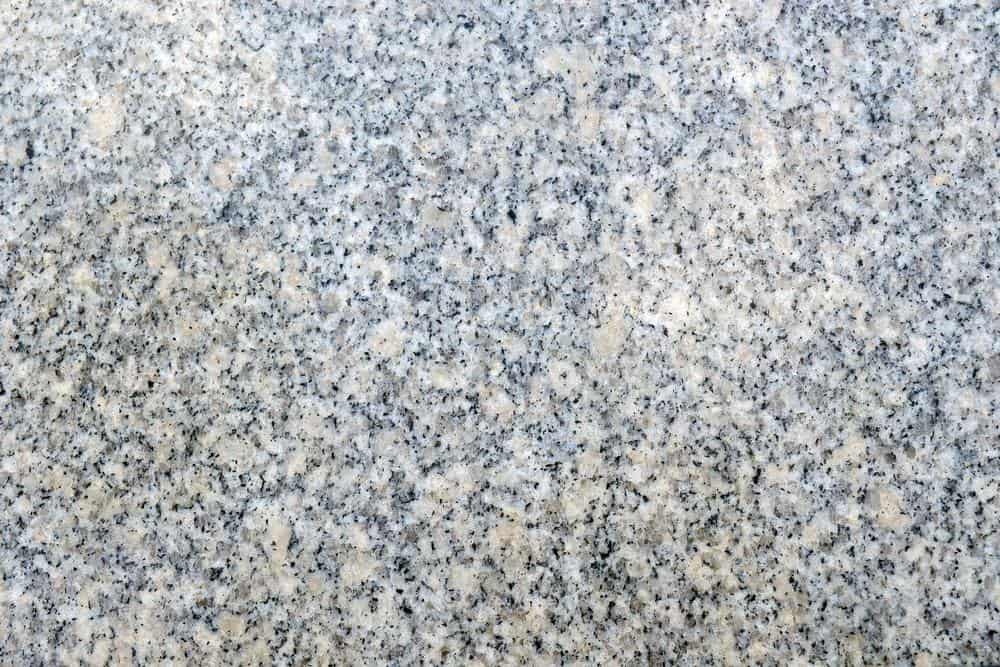
What You Need
- Small pet cooling pad or chilling granite stone
A pet cooling pad made of aluminum absorbs your chinchilla’s body heat helping it stay nice and cool as it naps. Alternatively, you can use a chilling granite stone that maintains a surface temperature lower than the room temperature.
This is a great way to keep a chinchilla cool without an A/C, especially for its naps on hot days.
Provide Regular Dust Baths
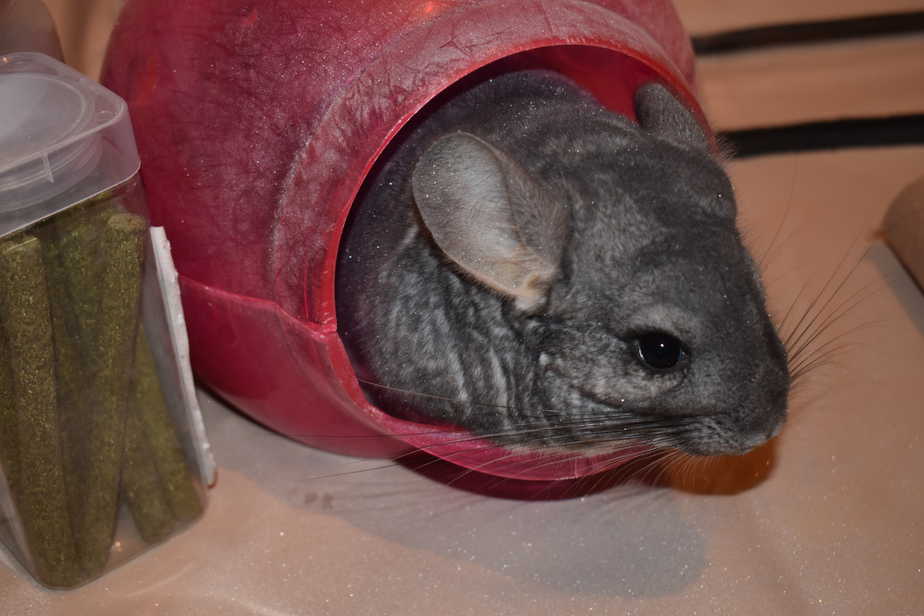
What You Need
- Chinchilla dust bath
- Large bowl or dust bath house
Dust baths will not cool your Chinchilla per se, but they are an essential part of their grooming and self-care.
Some experts even recommend allowing a chinchilla to dust bathe every day for 15 minutes each. However, too frequent dust baths could end up drying out your pet’s fur, so 2 to 4 times a week is considered optimum.
Place the dust bowl or bath house outside the cage for easier clean up. Trust me on this, I learned the hard way not to put it inside the cage.
Besides, this is a good way to get your pet out of the cage so you can quickly vacuum up the poop pellets. Remove the bowl after 15 minutes.
Try not to breathe in the dust when you put it in the bowl or bath house, or when you clean it up. Is chinchilla dust harmful to humans? The good kinds are not, but it is still better to not inhale it.
Maintain Optimum Humidity
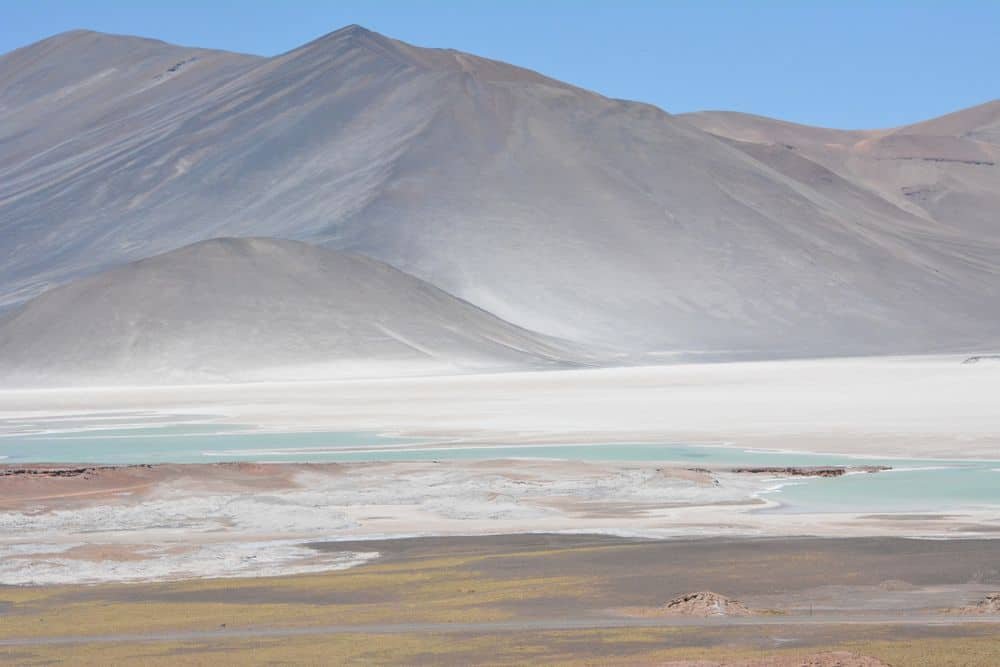
What You Need
- Hygrometer to measure relative humidity (and temperature, too)
- Dehumidifier
Chinchillas need a relative humidity of less than 60%. In the summers, if you do not have an A/C, the combination of heat plus humidity can worsen the situation.
If the humidity is too high, use a dehumidifier to bring it down to less than 60%. Remember: temperature + humidity should never exceed 150. Above this level, chinchillas are prone to heatstroke.
Use Blinds Or Blackout Curtains
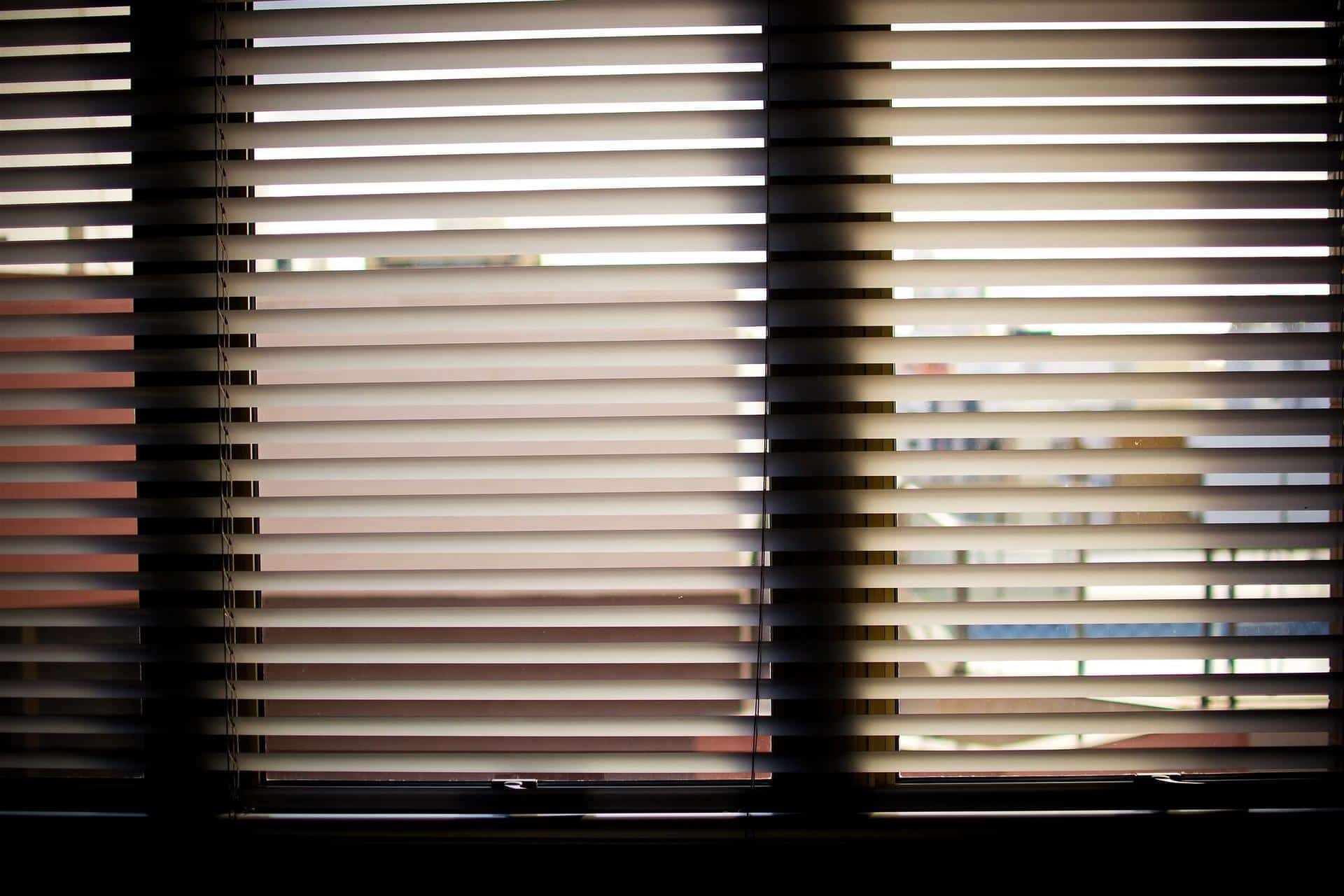
What You Need
- Blinds or curtains for windows
One of the simplest ways to keep a room cool is using shades and blinds.
The Department of Energy suggests using medium-colored blinds or drapes with a white backing, to reduce almost 76% of sunlight entering the room.
Alternatively, you can use complete blackout curtains to keep the oppressive sunlight out of the room.
Add Hideouts And Shaded Areas Inside The Cage
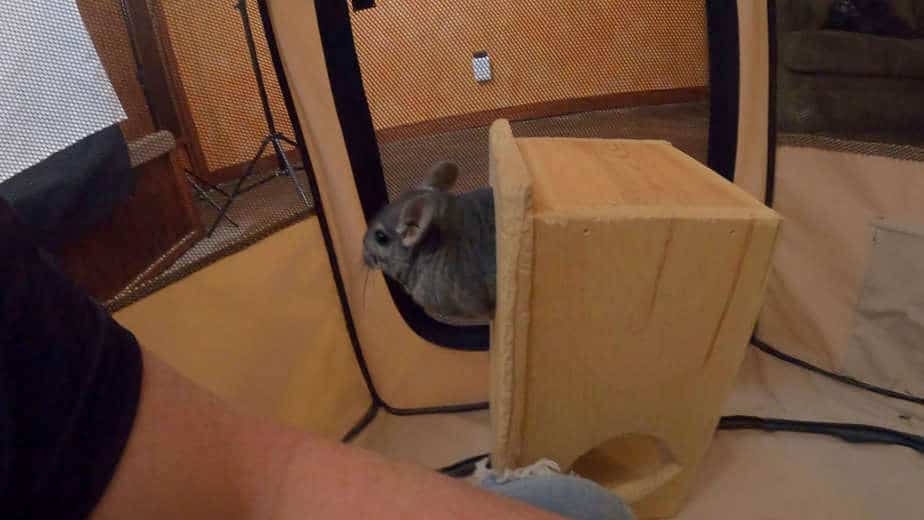
What You Need
- Hideouts for chinchillas
Chew-proof wooden hideouts provide a comfortable resting place for your fur buddy. It also stays cooler than the rest of the cage.
Avoid Using Electrical Devices In The Room
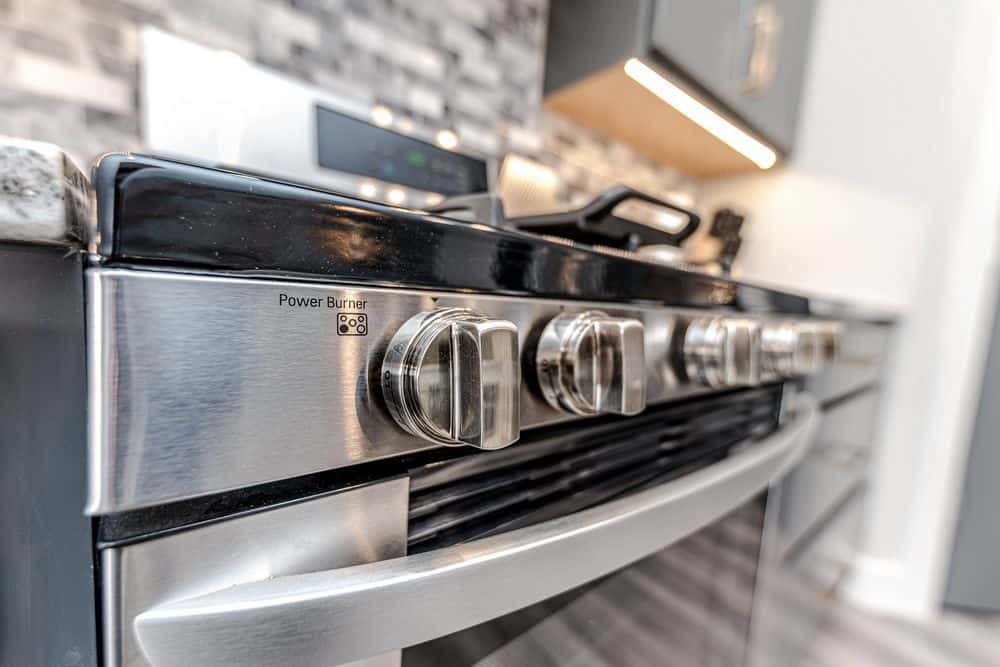
This means no stoves, ovens, or grills which generate a lot of heat. You certainly do not want these in the same room as your pet’s cage. If you have to use the above items, place your chinchilla’s cage in another, cooler part of the house first.
Things like TVs or computers also generate heat, though not as much. However, on an already hot day, these devices can add even more unwanted heat to the room.
Cooling Chinchillas Without Air Conditioning: Related Questions
Let’s briefly answer some of the common questions we get in relation to keeping your chinchilla cool without air conditioning. If you have any additional questions, feel free to ask them in the comments below.
How hot is too hot for a chinchilla?
Temperatures above 75° F (24° C) are considered very hot for chinchillas. Above 85° F (29° C), the chances of a chinchilla overheating or suffering a heat stroke go up considerably.
How can you tell if your chinchilla is overheating?
When a chinchilla overheats, its ears might appear red. It will become inactive. The inner part of its ears may also appear swollen.
Can chinchillas benefit from a fan in summers?
For very high temperatures over 80° F (27° C), simply using a fan may not protect your chinchilla from overheating and heat stroke. The fan will only circulate hot air around the room. It would be better to run the fan over ice cubes, so you can direct cool air toward your chin.
Cooling Chinchillas Without A/C: Final Thoughts
It is always best to keep your chinchilla’s room in the correct temperature range, and this means using air conditioning if outside temperatures get too hot. However, A/C is not always an option for everyone.
If you can not use A/C for whatever reason, there are a number of other methods you ca use to help keep your chinchilla cool. Try several of the above methods in conjunction and you should be able to get your pet safely through those hot summer days.
That said, if the temperatures get too high and you find that nothing you try keeps your chinchilla from overheating, you are going to have to get some type of cooling unit.
And if you have the opposite problem, we also have an article detailing how to keep chinchillas warm in winter here.
Dawn says
My chinchilla got heat stroke yesterday . We cooled him down and revived him but now I cant get him to drink or eat , his ears are down and he just goes to a corner of his cage any advice
Josh says
My guess is he’s still feeling bad. Give it a day or so. If he doesn’t eat or drink anything, contact your vet.